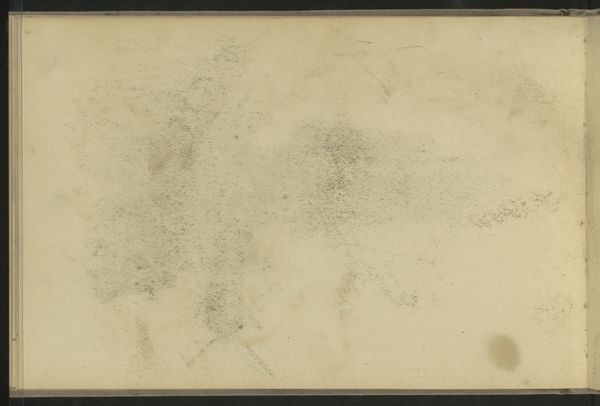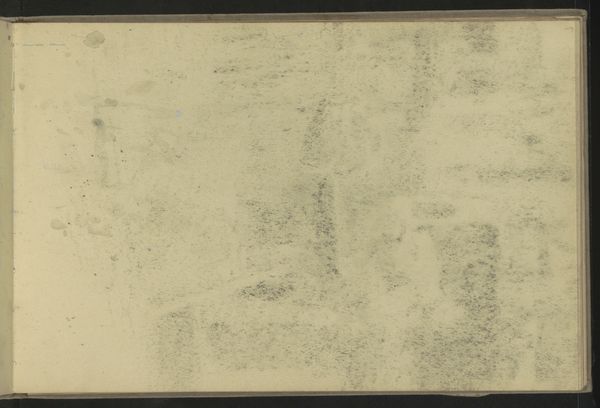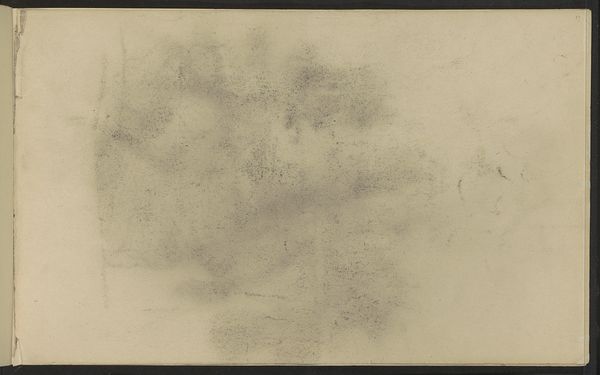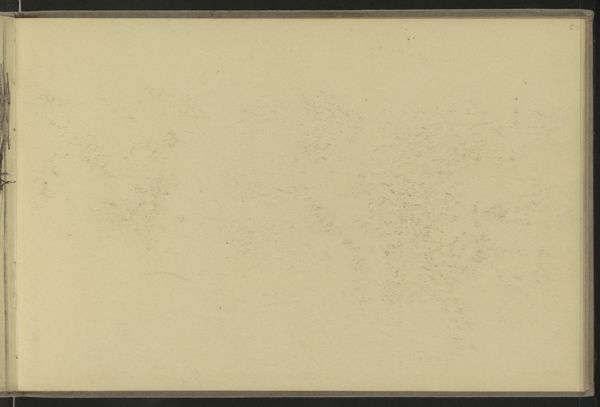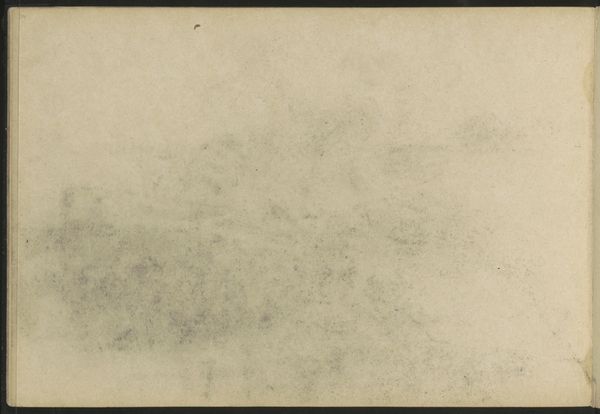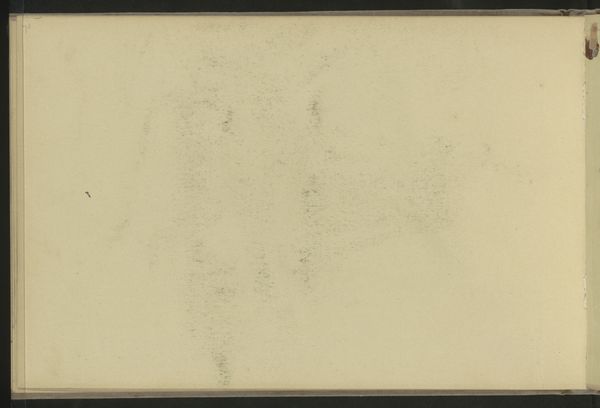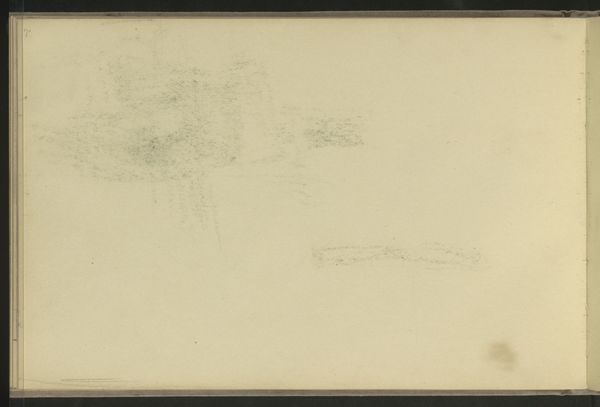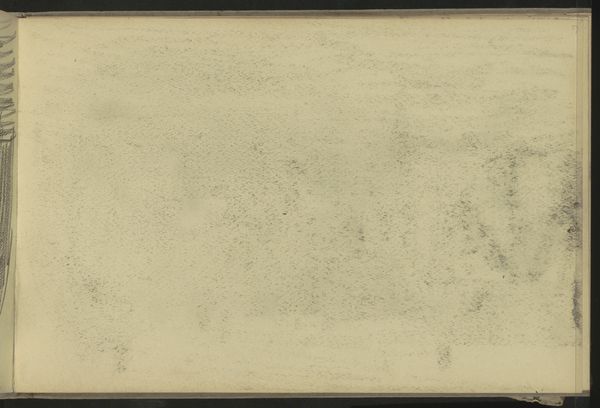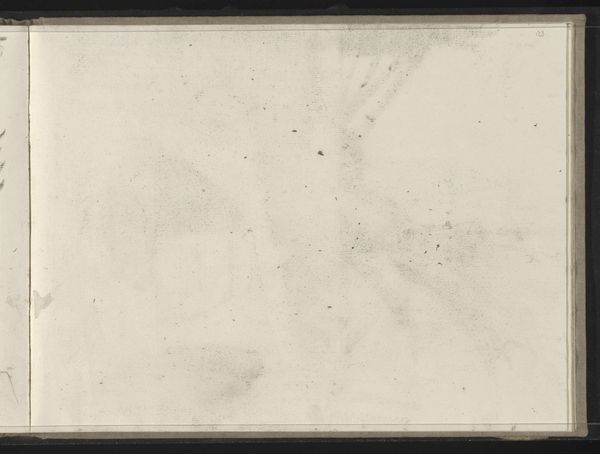
Copyright: Rijks Museum: Open Domain
Curator: Standing before us is "Abklatsch van een krijttekening," which translates to "Rubbing of a Chalk Drawing," created by Willem Witsen sometime between 1901 and 1907. It is a charcoal and chalk drawing on paper, currently held at the Rijksmuseum. Editor: My immediate impression is one of ghostly transience. The smudged lines and hazy patches give it a very ephemeral quality. It is an atmospheric piece. Curator: Witsen, known for his connections to the literary and artistic circles of the Tachtigers movement, was deeply concerned with depicting the changing urban landscape and the sense of melancholy tied to progress. I believe this piece speaks to that. Editor: Interesting. Looking at the application of charcoal and the negative space, the composition really emphasizes texture. I would say Witsen expertly uses the grainy quality of charcoal to establish visual interest and manipulate the play of light. Curator: The choice of technique itself is meaningful. A "rubbing," by its very nature, is a reproduction, a secondary image. Witsen, situated within the context of burgeoning industrialization and photography, appears to grapple with questions of originality and authenticity in representation. The technique here comments directly on art's role in a changing society. Editor: The lack of defined form forces your eye to wander, almost aimlessly, across the work, in a rather lovely way. I think one cannot divorce the medium from its function here. The roughness makes me think of something incomplete. Curator: Perhaps that sense of incompleteness is deliberate. Witsen's work often mirrors the fragmenting experience of modern life—the loss of tradition. This is reflected formally in the obscured subjects. Editor: True, the softness certainly amplifies that feeling. What I like the most is how little is there, it really provokes the question of where representation ends and abstraction begins. Curator: Ultimately, what we observe is a document of artistic process, layered with anxieties about a culture transforming around him. Editor: A very thoughtful use of impermanence. Thank you.
Comments
No comments
Be the first to comment and join the conversation on the ultimate creative platform.
